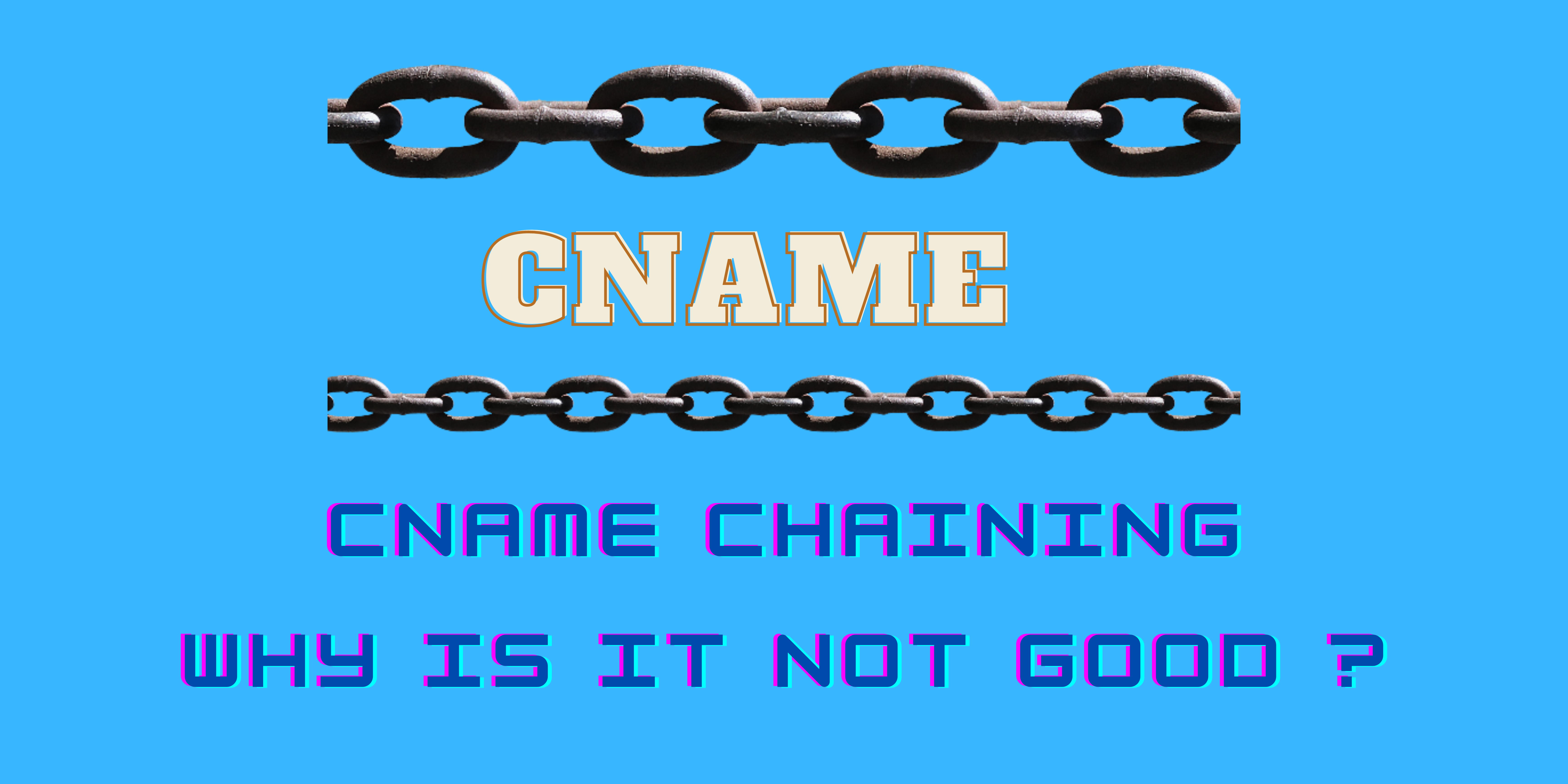3 minutes
Why is CNAME chaining not considered good ?

Table of contents
- What is CNAME ?
- What is CNAME chaining ?
- When is CNAME chaining useful ?
- Why is CNAME chaining not considered good ?
- Conclusion
What is CNAME ?
CNAME stands for Canonical Name, and it is a type of DNS record used to map one domain name to another. A CNAME record is essentially an alias for a domain name.
What is CNAME chaining ?
CNAME chaining is a DNS configuration technique that involves creating a CNAME record that points to another CNAME record. In essence, it is a chain of CNAME records that direct queries to the final record in the chain, which ultimately resolves to an IP address.
When is CNAME chaining useful ?
CNAME chaining may be necessary is when using a Content Delivery Network (CDN) that requires CNAME chaining to work correctly. In this case, the CDN provider may require the use of a CNAME record that points to another CNAME record, which ultimately resolves to the IP address of the CDN server. This can be necessary to ensure that traffic is properly directed to the CDN, which can improve website performance and reduce server load.
Another scenario where CNAME chaining may be preferred is when consolidating multiple domain names into a single website or server. By using a CNAME chain to point all the domain names to a single hostname, you can simplify DNS management and reduce the number of A records that need to be updated when changing server IP addresses.
Why is CNAME chaining not considered good ?
While CNAME chaining may seem like a convenient way to manage DNS records, it has several drawbacks that make it a less than ideal solution.
It can cause performance issues each CNAME record in the chain requires an additional DNS lookup, which can add to the response time of the query. This extra step can cause a delay in resolving the final IP address, which can affect the overall performance of the website or application.
It can cause issues with email delivery as CNAME chaining can interfere with email delivery by causing issues with SPF and DKIM records. These records authenticate email messages and ensure that they are not flagged as spam. When CNAME records are chained, it can cause SPF and DKIM records to fail, resulting in email delivery issues.
It can cause problems with SSL/TLS certificates as CNAME chaining can cause issues with SSL/TLS certificates, which are used to secure website connections. When CNAME records are chained, it can cause SSL/TLS certificates to fail validation checks, resulting in security warnings or errors.
It can cause difficulty in troubleshooting DNS issues as CNAME chaining can make it difficult to troubleshoot DNS issues because it can be challenging to determine which CNAME record is causing the problem. This can lead to longer resolution times and frustration for both users and system administrators.
Conclusion
In conclusion, while CNAME chaining may seem like a convenient way to manage DNS records, it is not recommended due to the performance, email delivery, SSL/TLS certificate, and troubleshooting issues it can cause. Instead, it is best to use a simpler and more direct approach to DNS configuration that avoids CNAME chaining whenever possible.